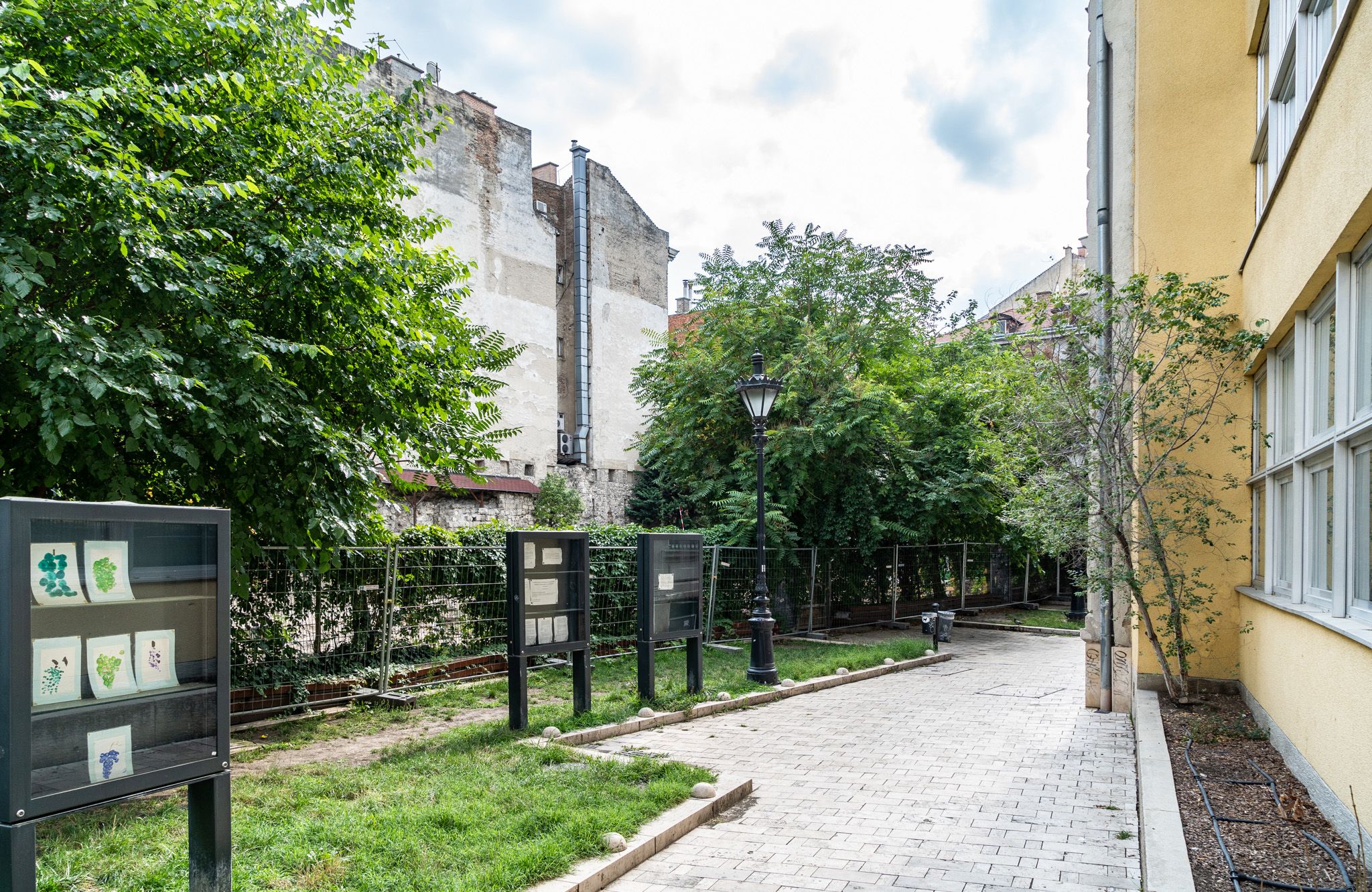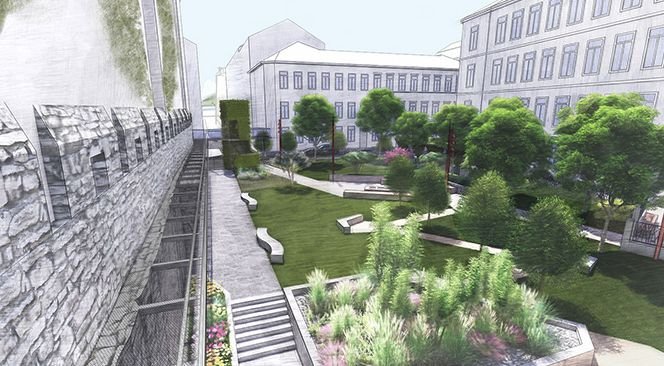The public park to be established in the area under 1–11 Bástya Street will be both a recreational park and an exhibition presenting the area's archaeological finds. The park will also include a mini educational trail. The route will touch the still-standing city wall, its reconstructed machicolations and underground artefacts – reports the periodical Mai Belváros. According to the article, visitors to the park will be served by rooms, including toilets with disabled access and changing rooms – below ground level. During the development, a section of the neighbouring Veres Pálné Street between Bástya Street and Vámház Boulevard will also be renovated.
Survey drawing of the surviving section of the old Pest city wall in Bástya Street from the 1941/10 issue of the Technika magazine
The longest free-standing continuous part of the medieval city wall – about 40 metres – that once protected the city of Pest along the route of the present-day inner boulevard can be found in Bástya Street in the 5th District. Over the centuries, adjacent buildings were built onto the surviving parts of the city wall, but after the demolition of old houses began in 1937, a section of the wall on Bástya Street became visible again. Its significance in the city's history was recognised immediately, and the decision to preserve it was made. When several houses on Bástya Street were bombed in the Second World War, the rest of the wall also saw the light of day again.
Playground under the city wall on Bástya Street in 1972 (Photo: Fortepan/No.: 141220)
Later, a playground was established at the foot of the old city wall, and at the turn of the millennium, archaeological excavations began in the area. During these, archaeologists also searched for the foundations of the city wall built in the 15th century, and these were found at a depth of 5–6 metres in some sections. Arched cellars, old wells, and a Turkish-era rubbish pit were also located along the city wall.

Section of Bástya Street in August 2020 (Photo: Balázs Both/pestbuda.hu)
After the excavation, a playground was built under the city wall, which the neighbouring nursery school used. The local council eventually sold the plot in 2009. The new owner opened a parking lot on the land.
The unfortunate situation was solved on 9 October 2019, when the 5th District repurchased the plot. Shortly afterwards, the idea of creating a public park that would solve the future of this historic site was born. This was preceded by further archaeological excavations, after which the design process could begin.
Visual of the public park on Bástya Street, which also showcases archeological finds (Source: Belváros-Lipótváros Városfejlesztő Kft.)
The article in Mai Belváros writes:
“To increase green space as much as possible, more than 20 trees and more than 800 square metres of shrubs and perennials will be planted on the plot, increasing the proportion of green space from 4.5 per cent to over 50 per cent. Also, green walls covering over 600 square metres when fully grown will be built on the firewalls of surrounding buildings.”
The historic city wall once stretched from the Danube to the Danube along the path of the present-day Deák Ferenc Street – Károly Boulevard – Múzeum Boulevard – Vámház Boulevard.
Cover photo: Visual of the park on Bástya Street (Photo: Belváros-Lipótváros Városfejlesztő Kft.)









Hozzászólások
Log in or register to comment!
Login Registration